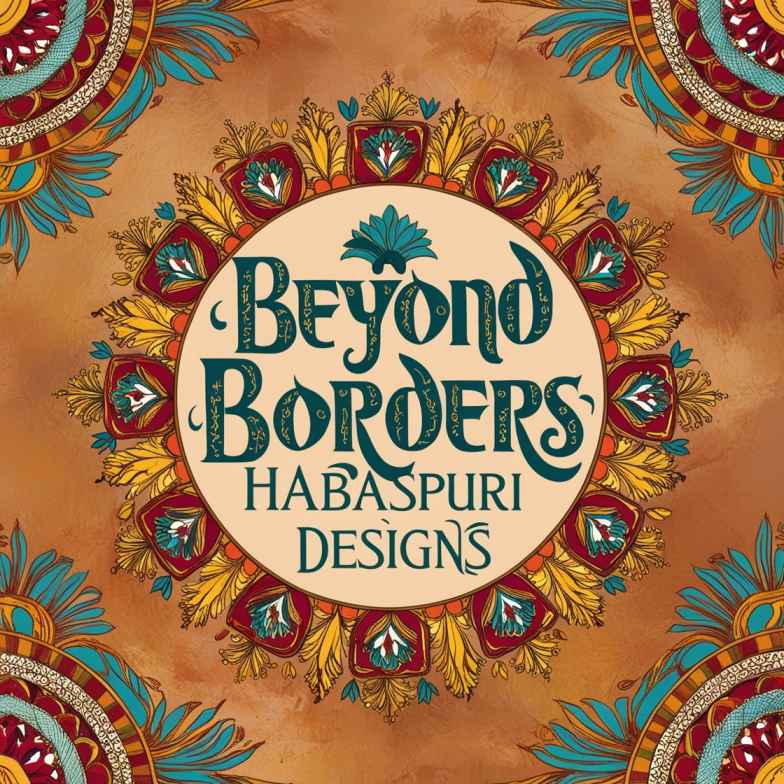Global Inspirations, Local Craft: The Fusion of Cultures in Habaspuri Designs
Habaspuri design, renowned for its intricate patterns and rich cultural heritage, has long been shaped by diverse international influences. From the grandeur of Persian motifs to the precision of European architectural styles, these global elements have contributed to the evolution of Habaspuri, blending traditional techniques with modern aesthetics. The interaction of cultures through trade, colonization, and technological advancements has allowed for the cross-pollination of ideas, making Habaspuri design a dynamic reflection of global history. This article explores the complex, cross-cultural forces that have transformed Habaspuri into a unique and globally recognized art form.
A Journey Through Time
The origins of Habaspuri design can be traced back to ancient trade routes, where cultures exchanged artistic ideas and techniques. The patterns and motifs of Islamic architecture, mainly geometric shapes and intricate detailing, heavily influenced early Habaspuri designs. This early period marked the blending of indigenous styles with those from the Middle East, where decorative patterns symbolized both spiritual and cultural significance.
As civilizations evolved, European design elements, especially those from the Renaissance and Baroque periods, began to leave their mark on Habaspuri. This fusion created a distinct visual language, incorporating ornate curves and symmetrical forms, further enriching the region’s artistic heritage.
European Influences on Habaspuri Designs
- Renaissance and Baroque Elements: The influence of Renaissance symmetry and Baroque intricacy brought a sense of grandiosity and order to Habaspuri designs, which focused on harmony and ornate detailing.
- Gothic Patterns and Structures: Gothic architecture’s pointed arches, ribbed vaults, and vertical lines impacted Habaspuri design, creating more intricate and elongated motifs.
- Colonial Architecture: During colonial periods, European styles such as neoclassicism and rococo blended with local traditions, introducing new materials like marble and ironwork while reshaping the visual language of Habaspuri designs.
- Craftsmanship Techniques: European artisanship influenced local techniques, enhancing the quality and sophistication of decorative elements.
Middle Eastern and Asian Contributions
- Persian Design and Calligraphy: Persian architecture, with its elaborate tilework and intricate calligraphy, heavily influenced Habaspuri designs. The use of delicate motifs, such as floral patterns and arabesques, became central to the design language, emphasizing both beauty and symbolic meaning.
- Indian Mughal Architectural Influence: Mughal architecture, known for its grandeur and symmetry, contributed to Habaspuri aesthetics through the use of domes, arches, and ornamental inlay work. You can see Mughal influences in the rich, luxurious materials and intricate patterning that characterize Habaspuri designs.
- Chinese and Japanese Aesthetics: The flowing, minimalistic nature of Chinese and Japanese art introduced subtle, nature-inspired elements to Habaspuri design. The intricate designs incorporated stylized elements like dragons, cranes, and bamboo patterns, contributing to a refined and balanced visual appeal.
African Influence on Habaspuri Design
- Geometric Patterns and Motifs: African art’s emphasis on bold geometric patterns and symmetry significantly influenced Habaspuri design. These patterns, often used to convey cultural stories or tribal identities, merged seamlessly with traditional Habaspuri styles, enhancing the overall intricacy of the design.
- Color and Textile Inspirations: The vibrant use of colors in African textiles, such as rich reds, yellows, and blues, infused Habaspuri designs with a new palette. This contributed to a striking visual contrast and vibrancy, incorporating elements that were both aesthetic and culturally symbolic.
- Cultural Significance: African art often reflects a deep connection to nature and spirituality, a theme that resonated with Habaspuri artisans. The integration of animal motifs, ancestral symbols, and earth-based tones created a unique fusion that added depth and meaning to the designs.
Modern Globalization and Cross-Cultural Design Integration
- Fusion of Contemporary Styles: Modern globalization has led to the blending of traditional Habaspuri designs with contemporary trends, creating a fusion of old and new. Elements like minimalism, abstract patterns, and sustainable materials are now integrated into Habaspuri design, giving it a modern edge while respecting its heritage.
- Global Art Movements: Influences from global art movements, such as Art Deco and Minimalism, are evident in the geometric precision and clean lines of contemporary Habaspuri designs, reflecting a more universal appeal.
- Collaborative Works: International designers and local artisans increasingly collaborate, merging global and local traditions to create innovative, hybrid designs that showcase the beauty of cross-cultural exchange.
Case Studies
- Habaspuri Design in Global Cities: In cities like Istanbul, London, and New York, Habaspuri designs have adopted elements from local architectural styles, creating unique hybrid works. For example, in New York’s diverse neighborhoods, Habaspuri-inspired designs blend seamlessly with art deco and modernist styles, while in Istanbul, traditional motifs are reimagined with a mix of Ottoman and European influences.
- Collaborative Works Between International Artists: In projects where international artists collaborate with Habaspuri artisans, global influences merge with local craftsmanship. Notable examples include joint exhibitions where Habaspuri design incorporates African and Middle Eastern textile patterns or when European designers add clean, minimalist lines to traditional patterns, resulting in striking innovative artworks.
- Notable Modern Habaspuri Designs: Major modern design projects, such as luxury hotels and cultural centers, showcase how designers incorporate international influences into Habaspuri aesthetics. For instance, including Asian-inspired water features and geometric gardens in a Habaspuri design reflects a cross-cultural dialogue while using sustainable, eco-friendly materials that align with global design trends focused on sustainability.
Final Thoughts
Habaspuri design is a dynamic reflection of centuries of global influence, blending diverse cultural elements into a cohesive and evolving aesthetic. From the intricate patterns of Persian and Mughal architecture to the bold geometric forms of African art, each influence has contributed to the richness of Habaspuri design. Modern globalization has further accelerated this fusion, incorporating contemporary styles while preserving traditional craftsmanship. As we move forward, the continued exchange of ideas between cultures will only deepen the complexity and beauty of Habaspuri design, ensuring its relevance and vitality in the global art scene.


